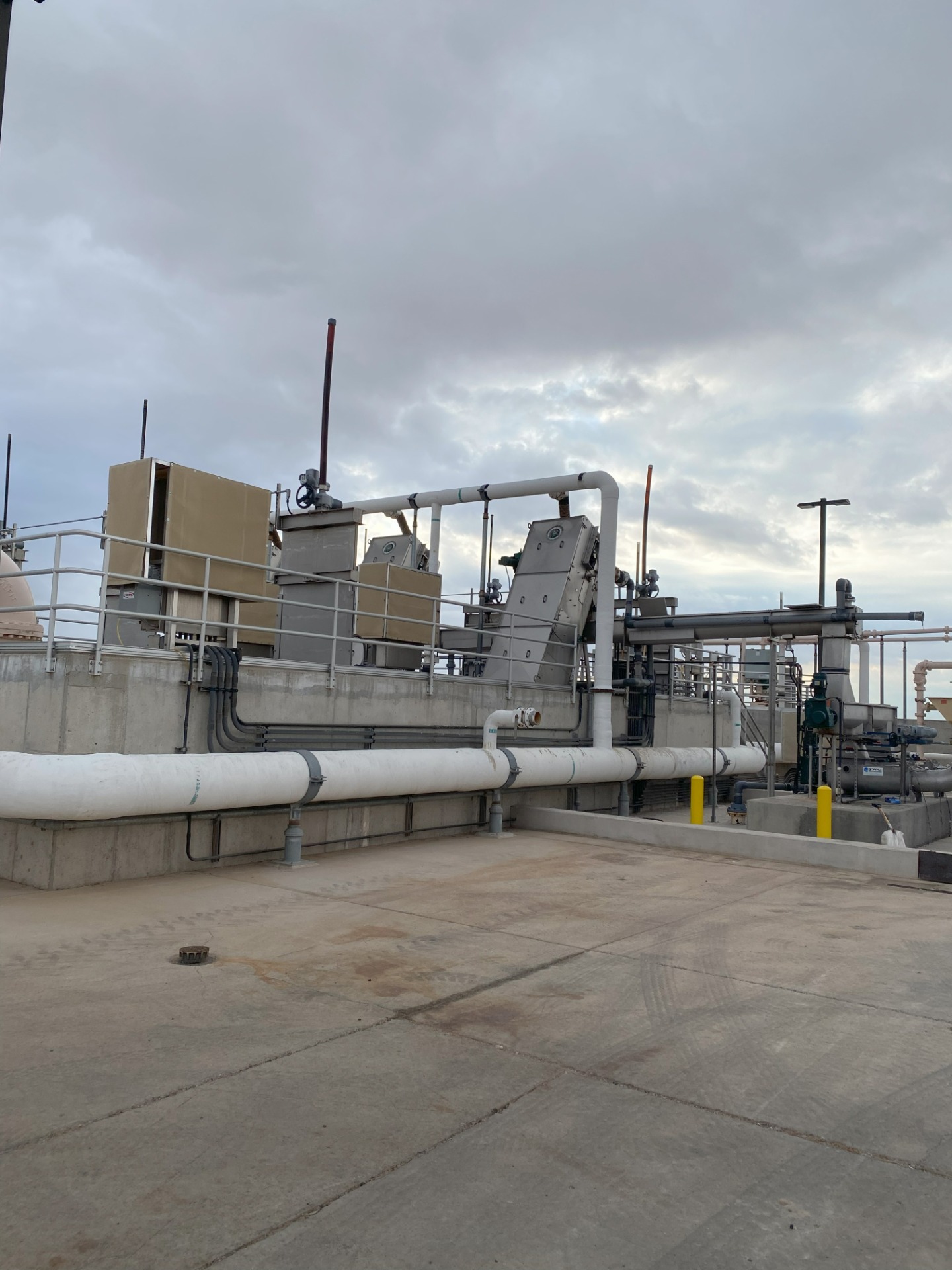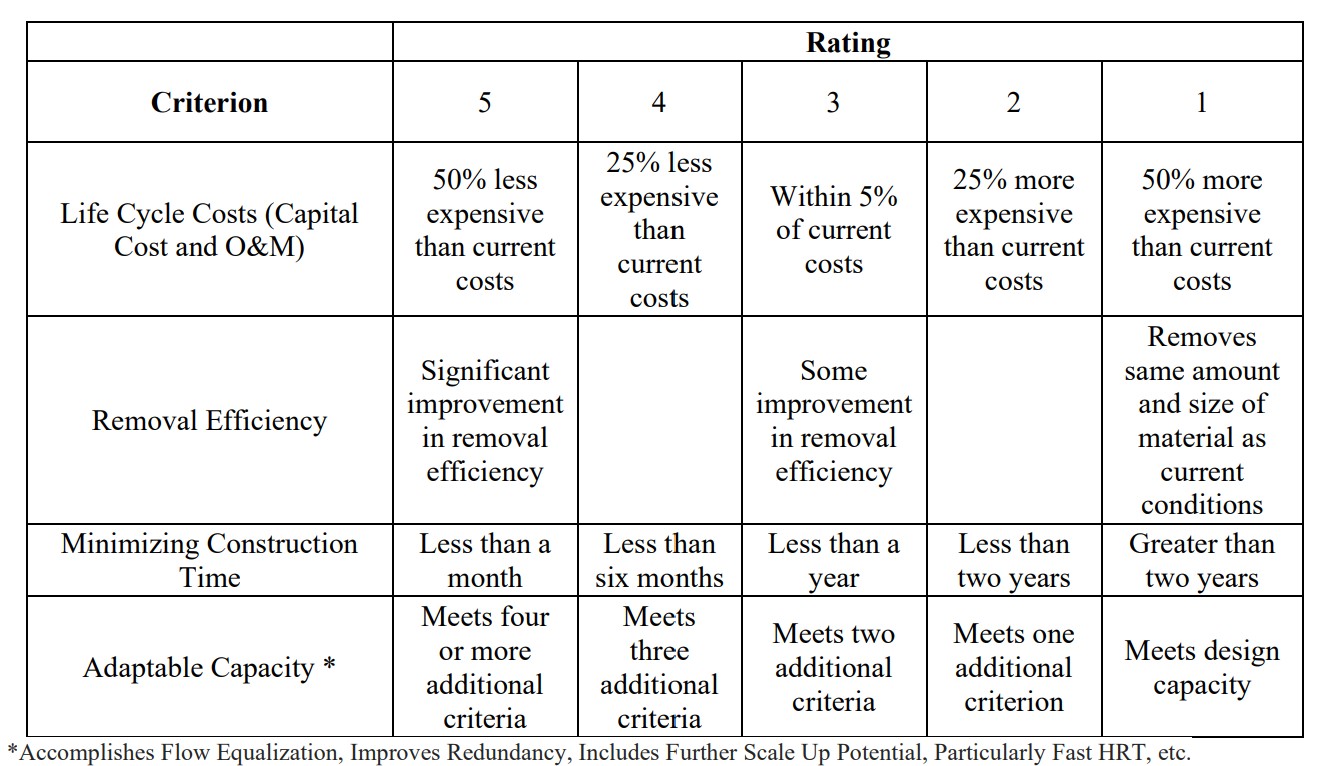Image by: Andrew Shipley
The purpose of preliminary treatment is to remove large solids including debris, sand, and grit from the wastewater influent flow.
The SPA 1 WRF currently uses three JWC Environmental Finescreen Monsters with 3-millimeter perforations. Fine screens work by having continuous perforated panels capture and lift solids and debris out of the raw wastewater. There are also two overflow channels running in between the fine screens that have bar screens. Rags are currently passing through preliminary treatment and damaging downstream brush aerators costing the plant additional maintenance costs.

Image by: WCWW
The three alternatives analyzed for preliminary treatment include: performing no changes to existing conditions, switching to band screens (In-to-Out screening), and adding a grinder in addition to the existing fine screens. Keeping the three existing JWC Environmental Finescreen Monster’s as they are with no changes to preliminary treatment will save the facility capital cost but will end up costing the facility more money in the long run with maintenance costs. Switching each JWC Environmental Finescreen Monster with a JWC Environmental Bandscreen Monster will require more capital up front, but the increased capture efficiency will save the facility money in the long run since they will not need to replace damaged equipment as often. Adding a grinder in series to the existing fine screens will require significant cost more in capital and energy costs upfront and in the long run; since the facility does not have a primary clarifier, a grinder may not reach optimal efficiency since the particles do not have a place to settle downstream.
Each alternative was scored 1-5 (1 being the worst and 5 being the best) based on how well they met each criterion. A summary of how each criteria was scored can be found in the following table.

The four criteria used in the decision matrix to evaluate preliminary treatment included lifecycle costs, removal efficiency, construction time, and adaptable capacity. Lifecycle costs and removal efficiency were weighted the highest at 30% each since the best alternative needed to make economic sense to implement as well as prevent damage in downstream systems. The assigned score was multiplied by the weight of the criteria, and the highest scored alternative was considered for final design.

Switching the JWC Environmental Finescreen Monsters with JWC Environmental Bandscreen Monsters is the recommended design solution based on analyzing each alternative. Band screens will offer higher capture efficiency while consuming the same approximate amount of energy. The cost to implement band screens is estimated to be lower in the long run than the cost of routinely replacing damaged brush aerators.
